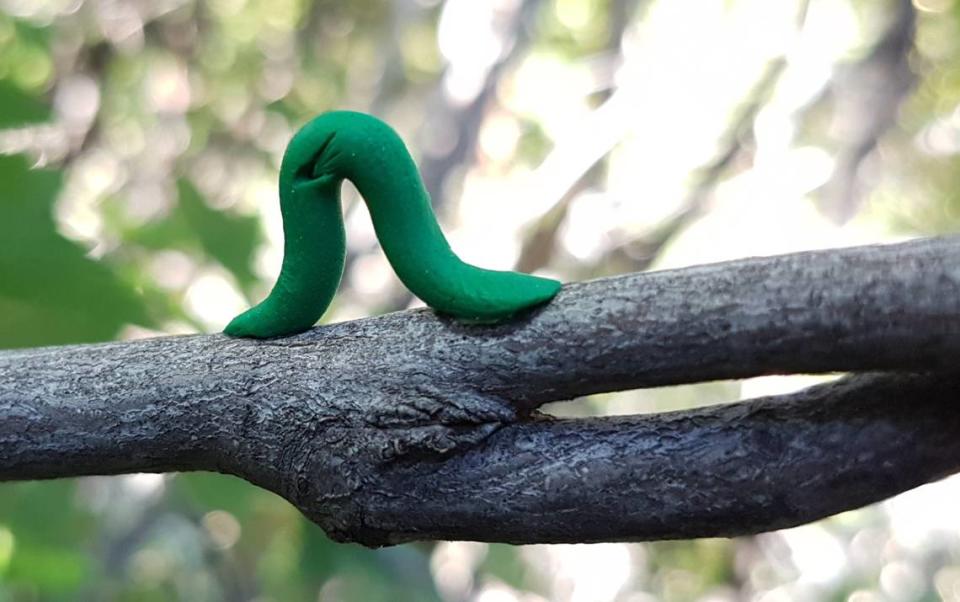A Boise State study fooled animals into thinking a raging river was near. Many disappeared
Animals don’t like noise, even if it comes from waterfalls. Using fake bugs and many speakers, Boise State University researchers found that louder natural areas deter birds and bats. If creatures haven’t yet adapted to thunderous rivers, they may find it difficult to live near noisy humans, too.
People, though, often ignore sounds when describing a pristine environment.
“You go to a national park, and you could be on a beautiful trail, but you’re going to hear a Harley-Davidson rip up the road,” said Dylan Gomes, a newly graduated doctoral student at Boise State.
And yet, many animals know to avoid areas near highways because of the screeching of tires.
Do animals also flee from natural sounds, like raging rivers? That’s the question Gomes and his colleagues answered in a study recently released by Nature Communications. They looked specifically at birds and bats, both of whom communicate and hunt with sound.
Creatures have had millions of years to adapt to naturally loud areas, like noisy rivers, but less than a couple hundred years to adjust to the sounds of automobiles. By studying how animals respond to hearing rushing water, researchers hoped to predict which traits allow animals to thrive in areas impacted by urban noise.
The study focused on whitewater rapid sounds.
Jesse Barber, associate ecology professor at Boise State, lifelong whitewater kayaker and another author on this study, explained: “They’re raging loud. All the time. In fact, paddlers have hand signals that we use to communicate with each other because it’s too loud to talk.”
The pitch, and not just volume, is also important. Once scientists figure out which types of noise deter which animals, engineers could, as Gomes suggested, create tires that rumble at pitches that don’t affect the wildlife present.
Choosing sites for research
Researchers chose 20 sites and made measurements over the course of two breeding seasons. At half of these, scientists used the existing river noises. In the remaining sites, which were quiet streams but had similar elevations and vegetation as the others, researchers placed speakers that projected the sounds of a whitewater rapid. By altering their recordings, they were able to play back the noise at different volumes and pitches.
At each site, scientists placed green “caterpillars” made from clay, robotic moths created from fluttering masking tape connected to a motor, and speakers that projected sounds of, for example, beetles walking on leaves. A suspended microphone measured bats swooping in to attack their prey, and wedges in the clay caterpillars determined whether they’d been attacked by birds.

A few years ago, it was simple for Barber to find places for his experimental speakers: “Everybody was like, ‘Yeah, this is great. Go ahead, put your speaker, raise it up here, play whatever you want, no worries.’ … Nobody even batted an eye.”
More recently, after Barber and others started publishing on the effects of noise pollution, landowners weren’t so willing to add extra noise: “Everyone was like: ‘Oh, noise pollution seems to be a real problem.’ ”
Once they found a cooperative ranch just north of Craters of the Moon, in the Pioneer Mountains, the scientists still had to wrestle with working in a natural environment.
“We got snow, we had 100-degree days, we had 60-mile-an-hour winds that destroyed all of our tents in one go,” Gomes said. “There were bears that attacked our gear, destroyed some of our recorders.”
They even lost some of their data when people fell into a river.
The birds and the bats
Researchers were careful about how they collected data. For instance, listening for bird song usually helps people count the number of birds in an area. But, just like the birds studied, humans’ own abilities to perform tasks might depend on background noise. The study employed a few strategies to avoid this, such as wearing earplugs and earmuffs.
The team found that there were 7% fewer birds when they raised the volume of the projected whitewater rapids by 12 decibels. This is roughly the difference between a whisper and regular conversation. Moreover, the birds in these louder conditions attacked prey at less than two-thirds the rate of their counterparts in quieter areas.
Birds don’t use their ears to hunt caterpillars and attack based only on sight. But just as a buzzing mosquito can distract someone from reading a book, the noise of whitewater rapids made birds worse at hunting.
The bats, too, were less active near louder fake rivers. Unlike the birds, who only cared about the pitch of the noise when it overlapped with their birdsong, bats were less lively when the pitch got higher.
“In the end, what we found was that … many animals can’t adapt to the noise, and that’s whether it’s from a highway or it’s from a river,” Barber said.
Even after they looked into the data to see what might make some species better able to adapt to noise than others, they “couldn’t really find anything,” he said.
This article, said Wouter Halfwerk, an ecologist who was not involved in this study, “tells us that we need to know a lot more about the natural world before we can understand the impact of humans on wildlife.”
While bats and birds disappear from areas with loud noises, that could be reversible.
“Turn on the noise,” Barber said, “it pushes all the animal populations down. We turn off the noise, and it all rebounds. … It’s a great success story, if we can make the world quiet again.”

